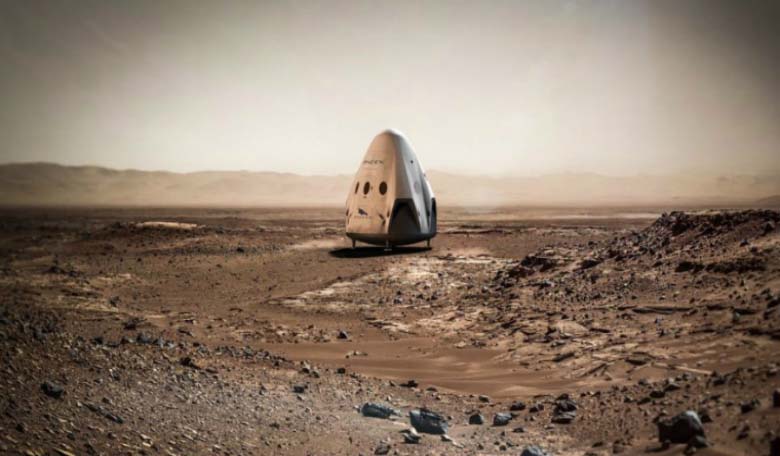SpaceX has announced its plans to launch a Dragon 2 spacecraft, nicknamed “Red Dragon”, to Mars on a Falcon Heavy launch vehicle as soon as there's a new launch window for missions to Mars (spring of 2018).
SpaceX CEO Elon Musk tweeted that “Dragon 2 is designed to be able to land anywhere in the solar system. Red Dragon Mars mission is the first test flight.” The company also posted pictures of a Falcon Heavy launch and a Dragon spacecraft resting on the Martian surface in their Twitter feed. Elon Musk is known for his long-term vision of establishing a permanent human presence on Mars.
In October 2011, a report prepared by the NASA/SpaceX team on an initial Red Dragon study concluded that “Dragon launched on Falcon Heavy would be a cost effective option for future missions”. It concluded that Dragon would be able to handle all aspects of entry, descent and landing (EDL) on Mars “with margin,” and deliver more than one metric ton of payload to the surface. Dragon's SuperDraco thruster is key to allowing it to land on Marsh. They system would be used to slow the spacecraft's descent through the Martian atmosphere and to land on the surface.
SpaceX and NASA signed an amended agreement on April 25 and 26 respectively, which changes the original schedule to a mission-oriented one, with milestones tied to the launch and landing of a Red Dragon mission. The date for the mission has not yet been specified. The revised agreement also replaces semi-annual reviews between NASA and SpaceX with quarterly ones.
The agreement does not mention what the Red Dragon mission would do. Red Dragon, if it were to land successfully on Mars, would not operate on the surface for long: the milestones include a post-mission review 60 days after landing.
NASA Deputy Administrator Dava Newman briefly mentioned the revised agreement with SpaceX in an April 27 blog post that broadly discusses the agency’s commercial partnerships. “In exchange for Martian entry, descent, and landing data from SpaceX, NASA will offer technical support for the firm’s plan to attempt to land an uncrewed Dragon 2 spacecraft on Mars,” she wrote.
Musk, meanwhile, has been hinting for months that he will reveal more details about his long-term Mars plan at the International Astronautical Congress in Guadalajara, Mexico, in September. “I thought it would be a good venue to describe what we think would be a good approach,” he said during a press conference April 8 at NASA’s Kennedy Space Center after the Falcon 9 launch of a Dragon cargo spacecraft to the International Space Station.
That approach, he added, included eventually establishing a “city” on Mars. “I think it’s going to sound pretty crazy,” he acknowledged. “So, it should be at least entertaining.”











